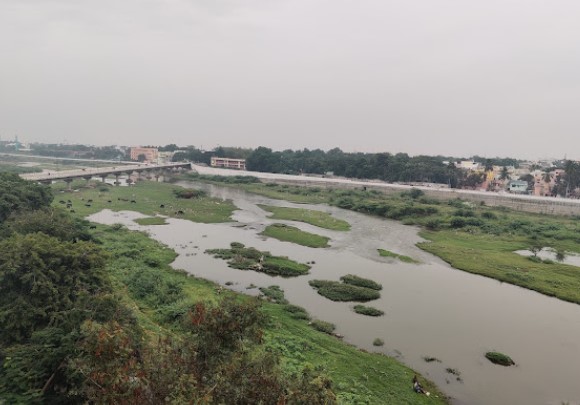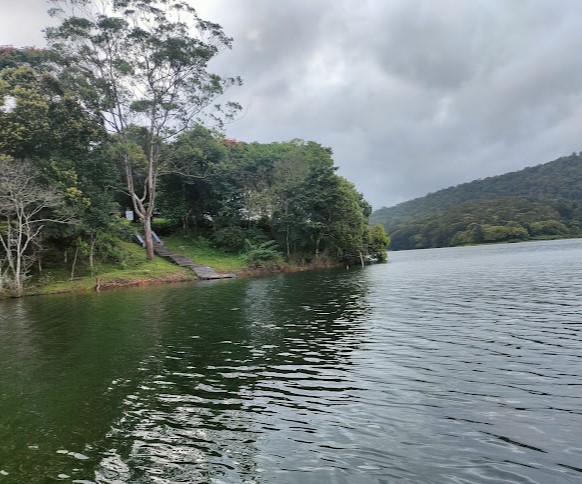- This is one of the 276 Devara Paadal Petra Shiva Sthalams and 46th Shiva Sthalam on the northern bank of the river Cauvery in Chozha Nadu (Vadakarai).
- Lord Shiva in this temple is a Swayambhu Murti (self-manifested).
- The 64th “Thiruvilaiyadal” of Lord Shiva took place here.
- This is one of the 24 important temples for Lord Dakshinamoorthy.
- This is one of the 44 Paadal petra sthalams where the “Moovar” (the three saints - Saint Thirugnanasambanthar, Saint Thirunavukkarasar (Appar) and Saint Sundaramurthy (Sundarar) had rendered their Pathigams.
- This east facing temple has two corridors and its main tower Rajagopuram has 5-tiers.
- The last consecration ceremony (Maha Kumbabishekam) took place on 18.03.2016.
- The temple is situated on the northern bank of the river Manniyaru and is surrounded by three rivers - Manniyaru, Kollidam and the Cauvery.
- Once this temple was under the control of the Pandya kingdom and king Varaguna Pandyan built this temple in brick.
- Later, the Chola king Adhithya Chola-I converted it into a granite temple.
- The historical names of this place are Thirupurambiam, Kalyanamaanagar and Punnaahavanam.
- Some of the idols in the koshtam and the corridor are badly broken.
- It is believed that this was done a long time ago by people from other religious backgrounds.
PURANIC SIGNIFICANCE 1:
Pralayam Katha Vinayagar:
- There is a unique Vinayaga named Pralayam Katha Vinayagar (Pralayam means destruction of Earth by the forces of Sea Water, Katha means Safeguard, Vinayagar means Lord Ganesha) in the temple premises.
- It is believed that during the end of Kritha Yuga, the Earth was destroyed by the water forces of the 7 Seas.
- Thiruppurambiyam existed during the Kritha Yuga and Lord Shiva wished to preserve this place and hence, ordered his son, Lord Vinayaga to safeguard this place.
- Lord Ganesha using the powers of Pranava Mantra (Om) controlled the forces of the seven seas into one well and saved this place from Pralaya.
- Devotees can see the well that contains seven seas in the temple premises even today.
- The Well is known as Ezhu Kadal Kinaru or Saptha Sagara Koopam.
- Lord Varuna created an idol of Lord Ganesha from sea shells & other materials obtained from the sea and worshipped him as Pralayam Katha Vinayakar.
- This idol of Ganesha is still worshipped in this temple. On the night before Vinayaka Chathurthi, a special anointing with 100 kgs of honey is done to Vinayaga.
- The anointing with honey is performed throughout the night. During the anointing, the honey poured on the idol will be absorbed by the Idol.
- The deity shines like it is made of Gold on that day.
- No abhishekam is done during other days.
Thiruppurambiyam:
According to the legend, during the great deluge (Pralayam) of the earth, the flood waters did not enter this particular place and branched off.
Hence this place came to be called as Thiruppurambiyam.
King Haridwajan got cured of Muyalagam here:
King Haridwajan of Magadha Kingdom was suffering from a disease called Muyalagam due to the curse of Sage Durvasa got cured in this temple by the grace of Lord Shiva.
Lord Shiva darshan to poor woodcutter:
It is believed that Lord Shiva granted darshan to a poor woodcutter in the form of Dakshinamoorthy who was carrying fuel to the temple from the banks of the tank in the east of the temple.
PURANIC SIGNIFICANCE 2:
- According to Hindu mythology, the end of every “yuga” is marked by a huge flood that leads to the destruction of all living beings on the earth.
- This is called the “Pralayam”.
- During the deluge at the end of the “Krutha yuga”, on the instruction of Lord Shiva, Vinayakar of this temple saved this place by diverting the water of all the seven seas into this temple’s well.
- This well is called the “Saptha Sagara Koobam” (“seven sea well”) and it is located on the eastern bank of this temple’s tank.
- Hence the Vinayakar here is praised as “Pralayam Katha Vinayagar”.
- This place gets the name Thiru Purambayam because it was an exception and was not affected by the Pralayam (“puram” means exception and “payas” means water in Tamil).
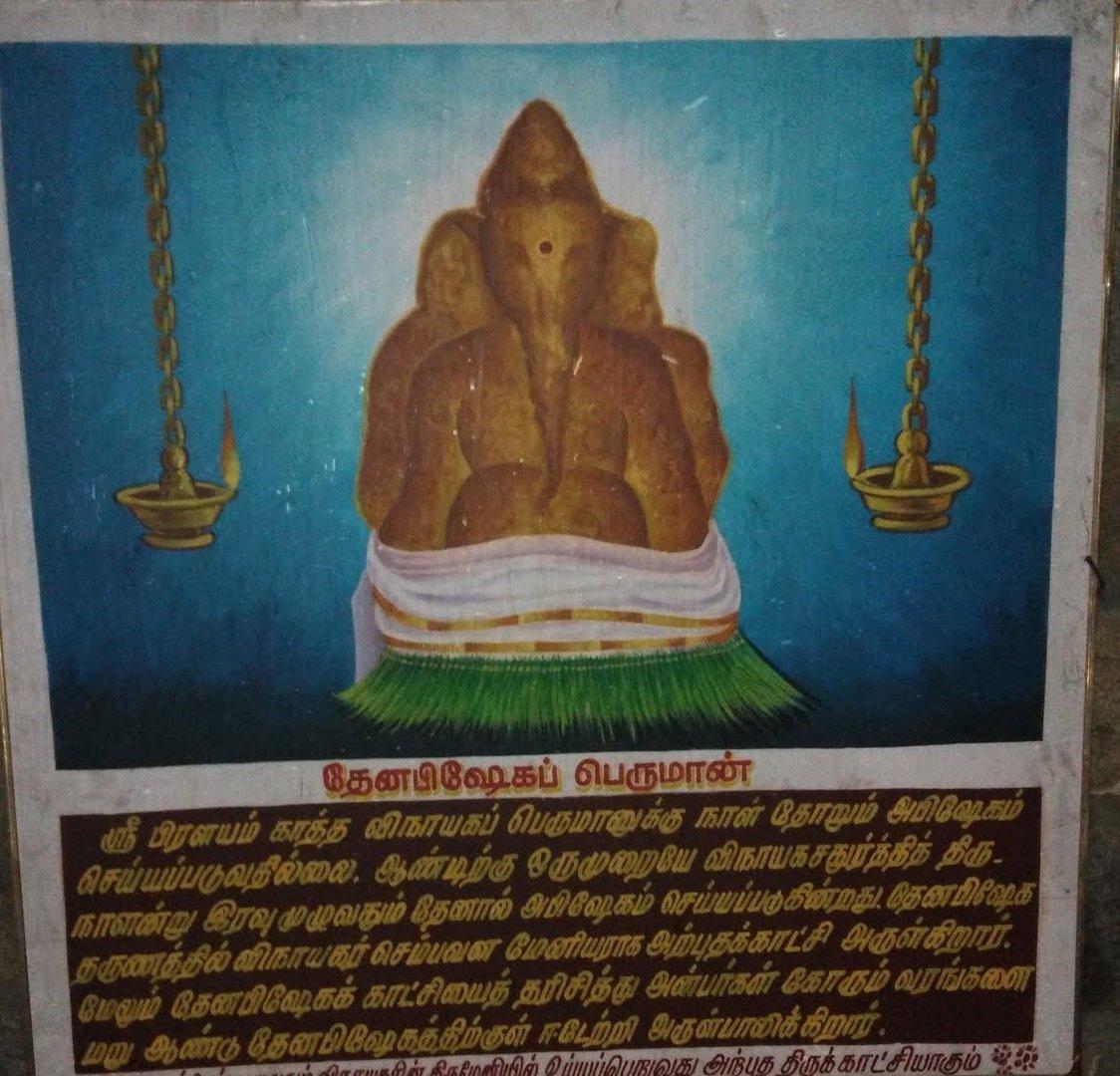
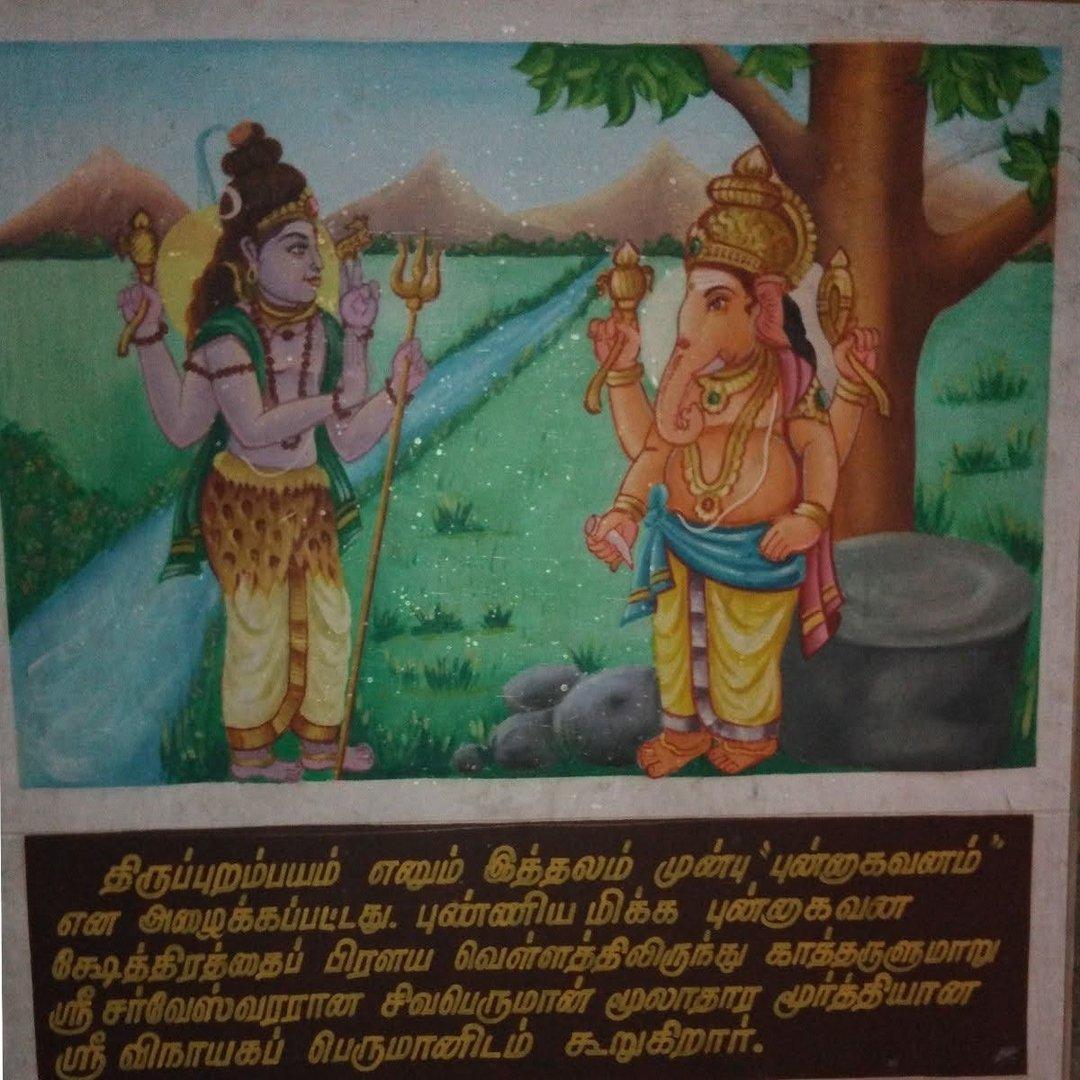
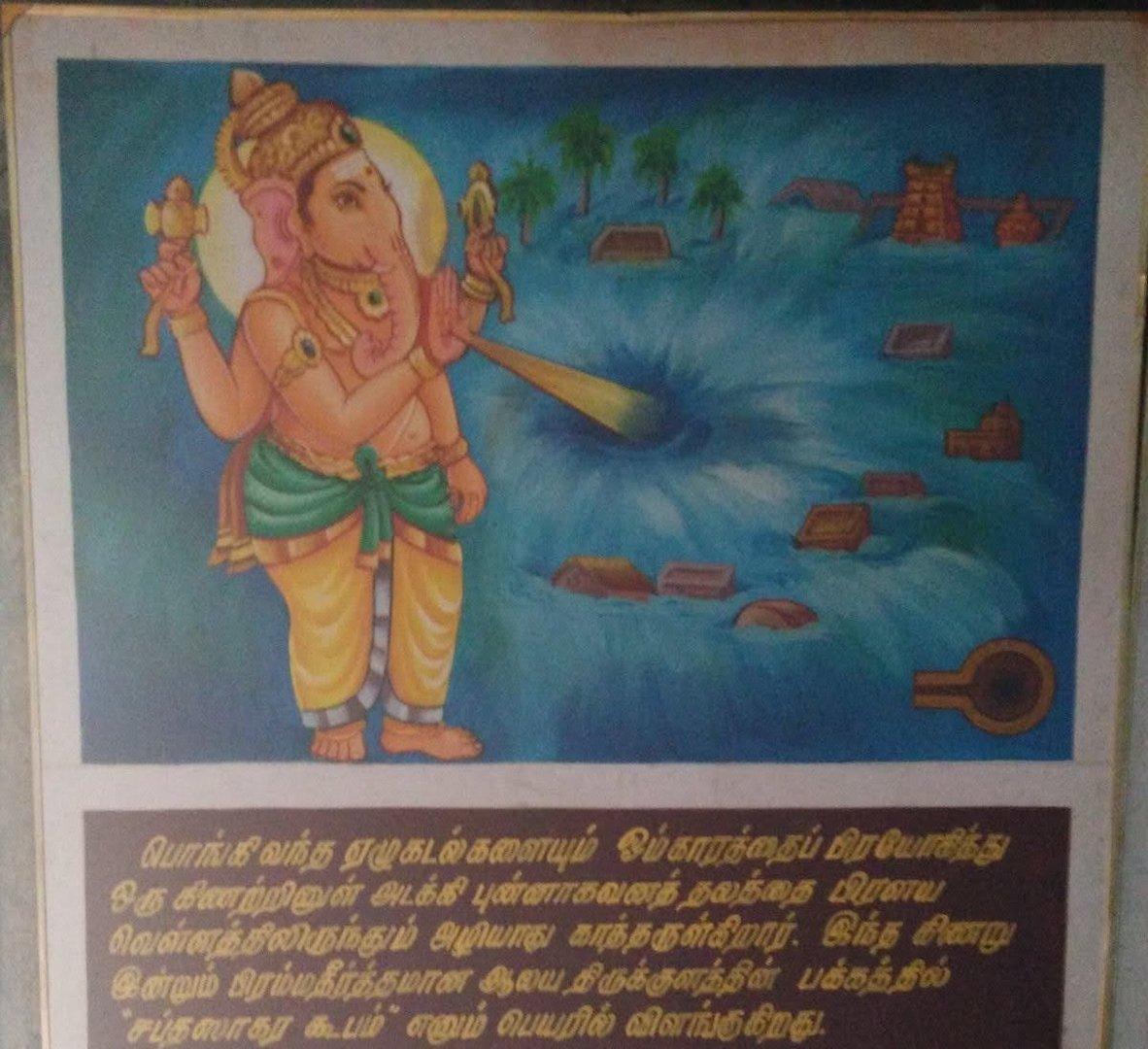
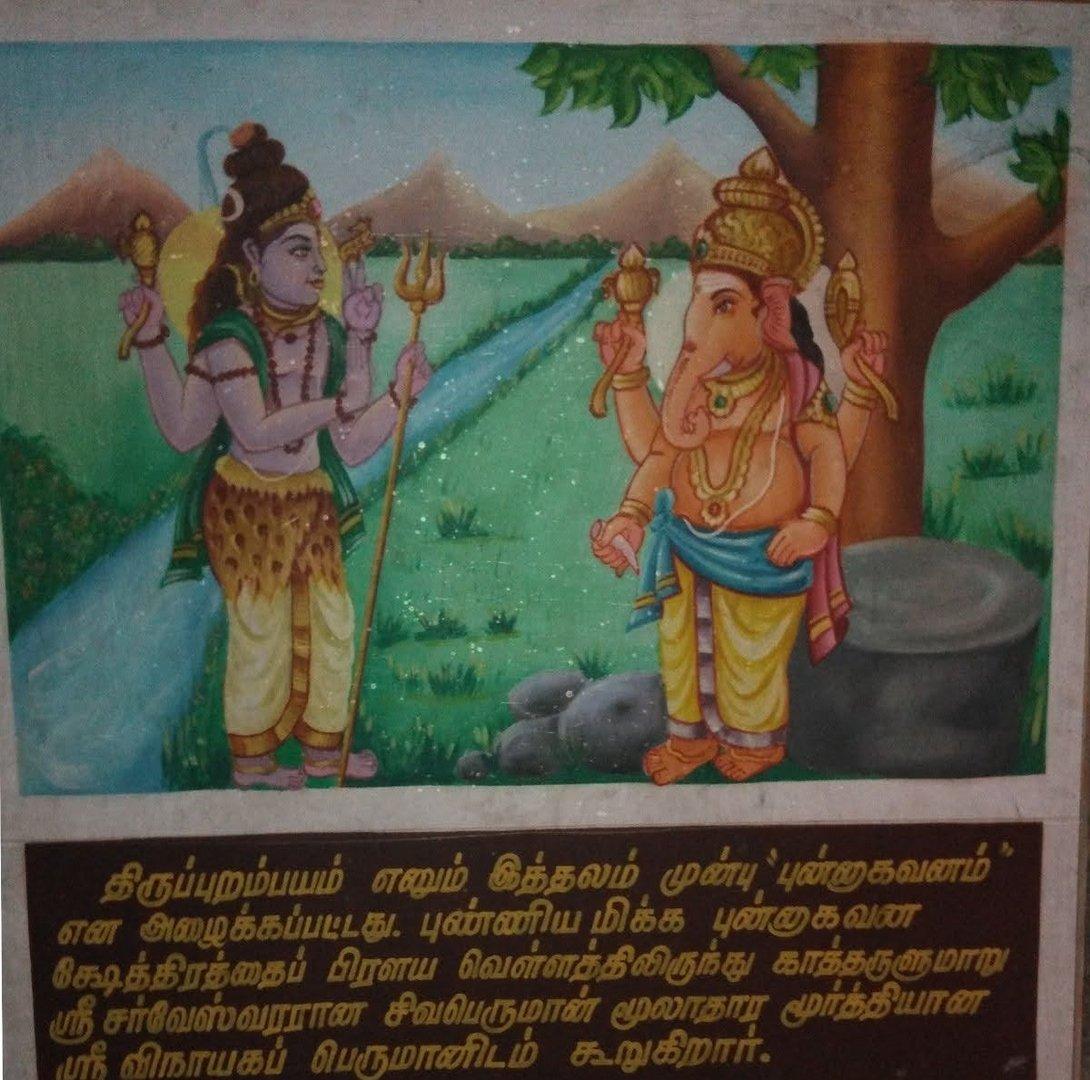
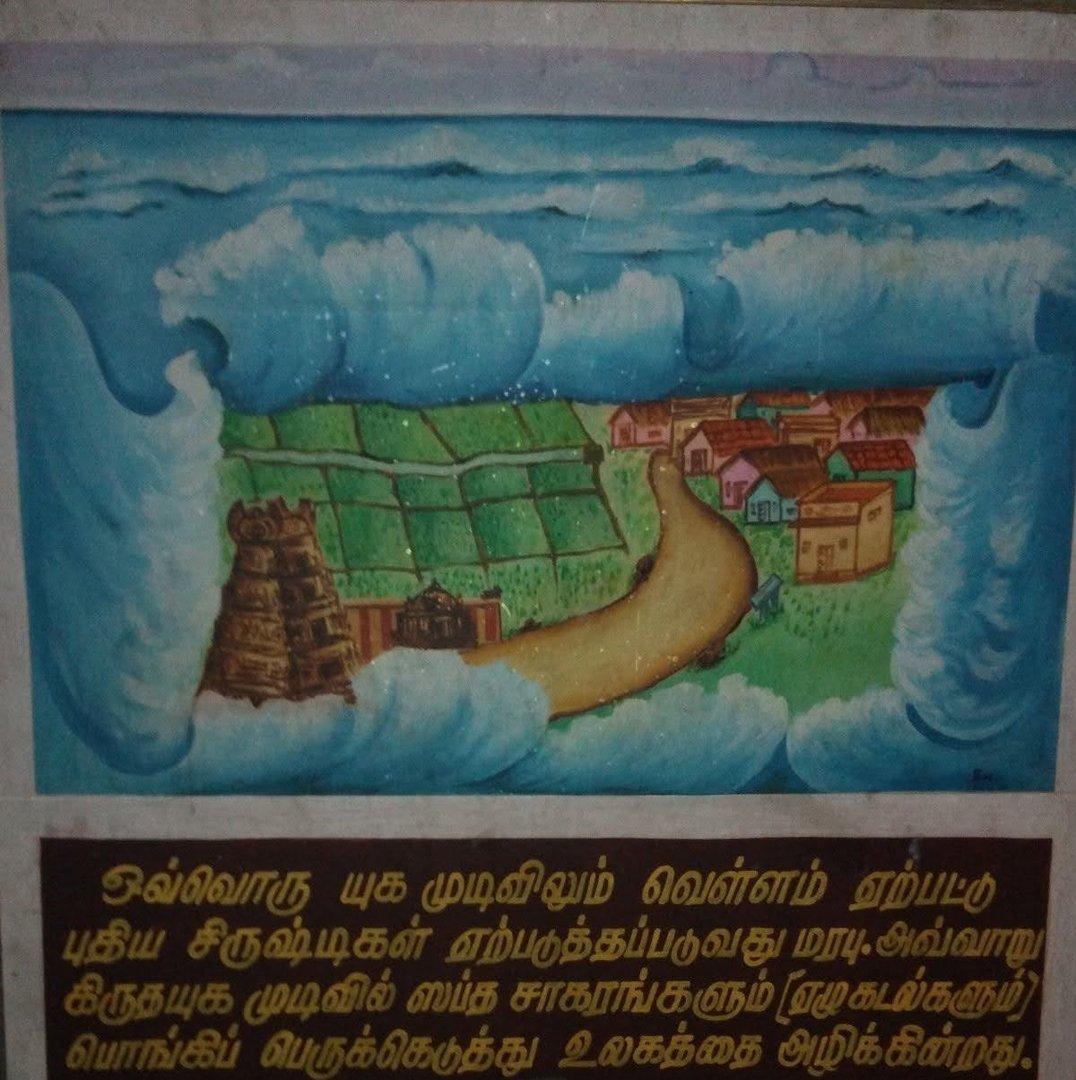
PURANIC SIGNIFICANCE 3:
- Another legend associated with this temple is that the 64th “Thiruvilaiyadal” of Lord Shiva took place here.
- Thiruvilaiyadal is a collection of sixty-four epics and devotional stories written in the 16th century by Saint Paranjothi Munivar.
- They record the stories of Lord Shiva appearing on earth in various disguises to test his devotees.
- This 64th Thiruvilaiyadal refers to the following story. It is believed that a businessman (a chettiar) from Kaveripoom Pattinam (Poompuhar) had a daughter named Ratnavalli.
- He wanted to marry her to his nephew who lived in Madurai.
- He fell ill and called his nephew to Poompuhar and gave him Rathnavalli’s hand in marriage before passing away from his illness.
- The boy decided to go back to Madurai with the girl and on their way, they spent the night in this temple.
- But unfortunately, he died of a snake bite on that night. Rathnavalli cried and prayed to Lord Shiva for help.
- It is believed that Lord Shiva brought him back to life and got them married under a Vanni tree in this temple’s corridors.
- Since there was no one else present at that time, the wedding took place in the presence of inanimate objects like this temple’s kitchen, its well and the Vanni tree.
- Later Rathnavalli’s marriage was challenged by the businessman’s first wife in Madurai.
- In order to show proof of the wedding, Lord Shiva went to Madurai’s Sri Sundareswarar temple along with the items that had witnessed the marriage - the kitchen, the well and the Vanni tree from Thiruppurambayam.
- Hence the lord here is praised as “Sri Satchinathar” (the lord who stood witness). Even today one can see the kitchen, well and the Vanni tree in the corridors of the Madurai temple.
- Interestingly, all the three items can also be seen here.
PURANIC SIGNIFICANCE 4:
- It is believed that a wood cutter (a “Pulainjan”) from the nearby village Govandhaputhur, who supplied firewood to this temple got the darshan of Lord Shiva (in the form of Lord Dakshinamurthy).
- King Haridwajan of Magada kingdom had suffered from a disease called “Muyalagan” due to a curse by Sage Durvasa.
- He visited many Shiva temples and finally came to this place and worshipped the lord here.
- It is believed that he was relieved of his curse and was cured.
- It is believed that Lord Brahma, Sukreev, Sages Agasthiyar, Dhronachary, Viswamithrar and Sanakathi Rishis (four) have worshipped the lord here.
Other Names:
Thirupurambiyam was called Kalyanamaanagar and Punnagavanam in ancient times.
People worshipped Lord Shiva here:
It is believed that Sage Agasthya, Dronacharya, Brahma, Sugriva, four Sanakathi rishis and Sage Vishwamitra worshipped Lord Shiva here.
d770a1.png)
